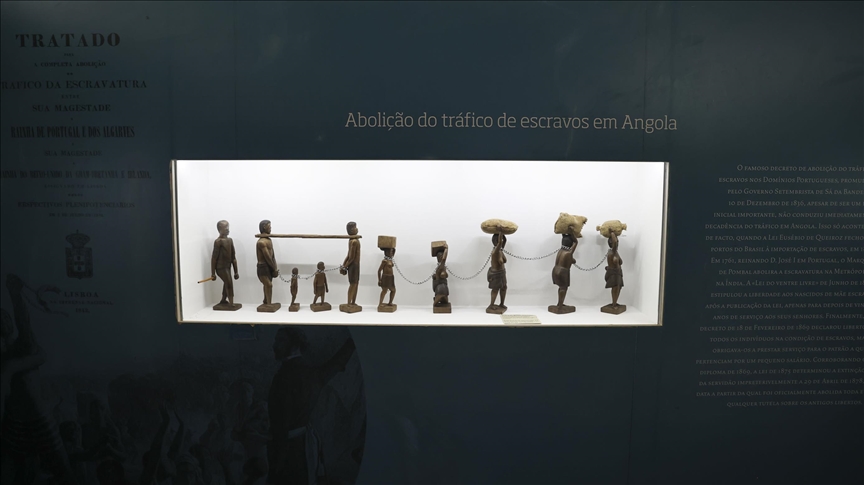Angola's museum sheds light on dark history of slavery
Museum visited by thousands of foreign visitors from Portugal, Germany, Spain, Russia, US

LUANDA, Angola
The National Museum of Slavery in Angola's capital Luanda reflects the history of slavery that gravely damaged the country and disrupted the social fabric in the past.
Although Angola has the third largest economy among Sub-Saharan African countries, the exploitation system and slave trade of Western countries, which inflicted heavy damage on the country in the past, are cited as one of the biggest reasons why at least one-third of its population of approximately 30 million live in poverty.
The National Museum of Slavery in the Morro da Cruz region displays the history of slavery.
According to the records, a British pirate ship – with more than 20 Angolans on board, who were forcibly detained from a Portuguese ship – anchored at Point Comfort, Chesapeake Bay on the east coast of the US in August 1619.
The arrival of these Angolans in Virginia 400 years ago is considered the beginning of the slavery that lasted for more than 200 years in the US.
Although most of the slaves in Africa were taken from Ghana and Senegal, it is known that more than 5 million slaves came from Angola, and a quarter of approximately 400,000 Africans sent to North America were colonized by the Portuguese who dominated the slave trade for decades.
Features recent history of southern African country
The Slavery Museum was built in 1977 by the Culture and Tourism Ministry in order not to forget the slavery that had caused great harm to Angola, which gained its independence in 1975, and ruined the social fabric in the past.
Located on the coast of the Atlantic Ocean, the museum neighbors the Mussulo island and Kwanza River, an important trade route where victims of the slave trade lived in the past.
The museum, which was quickly renovated after it was damaged during the civil war, hosts thousands of foreign visitors from Portugal, Germany, Spain, and Russia, especially from the US.
The artifacts depict the scenes where slaves were put on ships to be transported to America. There are shackles that slaves were tied to on ships, iron weights, sculptures featuring the slaves, models of ships from the slave trade period, weapons and materials used in daily life at that time.
The museum also houses cauldrons from the 18th century where Africans, who were forced to convert by their Portuguese "masters", were baptized while they were waiting for their boarding ship.
The museum, which also includes many souvenir shops, can be visited for $1.70.
Anadolu Agency website contains only a portion of the news stories offered to subscribers in the AA News Broadcasting System (HAS), and in summarized form. Please contact us for subscription options.








